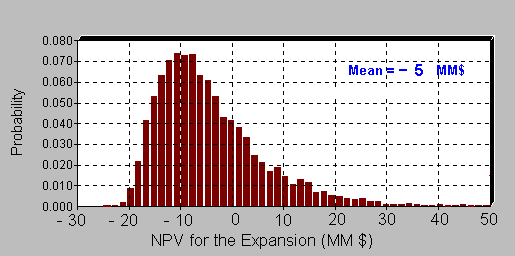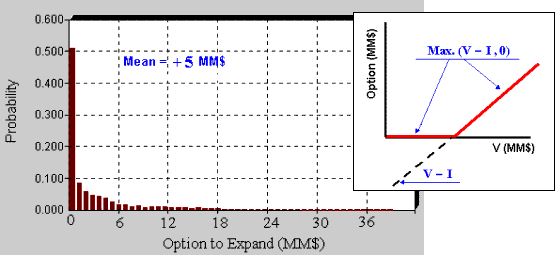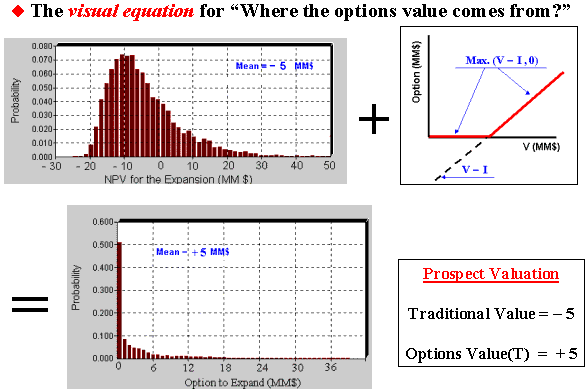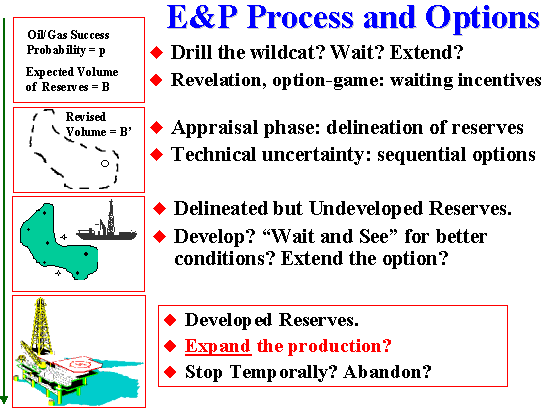
Answer with example: the option to expand.
Uncertainty Over the Expansion Value:
Considering combined uncertainties: in product prices and demand, exercise
price of the real option, operational costs, etc., the future value (2
years ahead) of the expansion has an expected value of $
- 5 million. The figure below illustrates
that.

The traditional discount cash will not recommend to embed an option to
expansion which is expected to be negative.
But the expansion is an option, not an obligation!
Rational managers will not exercise the option to expand @ t = 2 years in
case of bad news (negative value), only will exercise the options in case
of good news.


Look the above "equation" and answer: What happen
with the option value if the uncertainty is higher (with the same mean)?
Simple: both negative values and positive ones become more spread out.
But the negative values doesn't matter because with option a NPV negative
become zero, however the upside has a higher value in this case,
increasing the option value.
This is an alternative explanation of why uncertainty increases the value
of the real option.
Let us show an example of option to expand
the production for a petroleum E&P (exploration & production)
case.
The figure below shows the E&P investment as a sequential option
process. See in particular the last phase (producing asset phase).

Analyzing a large ultra-deepwater project in Campos Basin, Brazil, we faced two problems:
Solution: leave these wells as optional wells
Allocate only a small but important investment to permit a fast and low
cost future integration of these wells, depending of both market (oil
prices, costs) and the production profile response. This cost comprises
the cost to leave stand-by both area and load in the production platform
for the optional new wells, and a subsea lay-out so that permits an easy
integration with the existing system in case to exercise some of the
option to drill these optional wells.
So the development project is not optimized statically, it is optimized
dynamically considering the uncertainties and the options created into the
project basic design.
Modeling the Option to Expand, step-by-step:
Monte Carlo for American options is a frontier research area. See the page on Monte Carlo for Real Options.
Petrobras-PUC are starting a research project using Monte Carlo for real options (American type). The idea is to select the best mutually exclusive alternative under uncertainty to develop an oilfield.
![]()